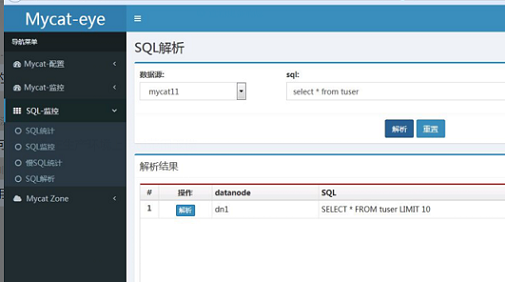秋招面试专栏推荐 :深度学习算法工程师面试问题总结【百面算法工程师】——点击即可跳转
💡💡💡本专栏所有程序均经过测试,可成功执行💡💡💡
本文给大家带来的教程是将YOLO11的backbone替换为EfficientViT结构来提取特征。文章在介绍主要的原理后,将手把手教学如何进行模块的代码添加和修改,并将修改后的完整代码放在文章的最后,方便大家一键运行,小白也可轻松上手实践。以帮助您更好地学习深度学习目标检测YOLO系列的挑战。
专栏地址:YOLO11入门 + 改进涨点——点击即可跳转 欢迎订阅
目录
1.论文
2. 将EfficientViT添加到YOLO11中
2.1 EfficientViT的代码实现
2.2 更改init.py文件
2.3 添加yaml文件
2.4 注册模块
2.5 替换函数
2.6 执行程序
3.修改后的网络结构图
4. 完整代码分享
5. GFLOPs
6. 进阶
7.总结
1.论文

论文地址:EfficientViT: Multi-Scale Linear Attention for High-Resolution Dense Prediction——点击即可跳转
官方代码: 官方代码仓库——点击即可跳转
2. 将EfficientViT添加到YOLO11中
2.1 EfficientViT的代码实现
关键步骤一:将下面代码粘贴到在/ultralytics/ultralytics/nn/modules/block.py中
python"># --------------------------------------------------------
# EfficientViT Model Architecture for Downstream Tasks
# Copyright (c) 2022 Microsoft
# Written by: Xinyu Liu
# --------------------------------------------------------
import torch
import torch.nn as nn
import torch.nn.functional as F
import torch.utils.checkpoint as checkpoint
import itertoolsfrom timm.models.layers import SqueezeExciteimport numpy as np
import itertools__all__ = ['EfficientViT_M0', 'EfficientViT_M1', 'EfficientViT_M2', 'EfficientViT_M3', 'EfficientViT_M4', 'EfficientViT_M5']class Conv2d_BN(torch.nn.Sequential):def __init__(self, a, b, ks=1, stride=1, pad=0, dilation=1,groups=1, bn_weight_init=1, resolution=-10000):super().__init__()self.add_module('c', torch.nn.Conv2d(a, b, ks, stride, pad, dilation, groups, bias=False))self.add_module('bn', torch.nn.BatchNorm2d(b))torch.nn.init.constant_(self.bn.weight, bn_weight_init)torch.nn.init.constant_(self.bn.bias, 0)@torch.no_grad()def switch_to_deploy(self):c, bn = self._modules.values()w = bn.weight / (bn.running_var + bn.eps)**0.5w = c.weight * w[:, None, None, None]b = bn.bias - bn.running_mean * bn.weight / \(bn.running_var + bn.eps)**0.5m = torch.nn.Conv2d(w.size(1) * self.c.groups, w.size(0), w.shape[2:], stride=self.c.stride, padding=self.c.padding, dilation=self.c.dilation, groups=self.c.groups)m.weight.data.copy_(w)m.bias.data.copy_(b)return mdef replace_batchnorm(net):for child_name, child in net.named_children():if hasattr(child, 'fuse'):setattr(net, child_name, child.fuse())elif isinstance(child, torch.nn.BatchNorm2d):setattr(net, child_name, torch.nn.Identity())else:replace_batchnorm(child)class PatchMerging(torch.nn.Module):def __init__(self, dim, out_dim, input_resolution):super().__init__()hid_dim = int(dim * 4)self.conv1 = Conv2d_BN(dim, hid_dim, 1, 1, 0, resolution=input_resolution)self.act = torch.nn.ReLU()self.conv2 = Conv2d_BN(hid_dim, hid_dim, 3, 2, 1, groups=hid_dim, resolution=input_resolution)self.se = SqueezeExcite(hid_dim, .25)self.conv3 = Conv2d_BN(hid_dim, out_dim, 1, 1, 0, resolution=input_resolution // 2)def forward(self, x):x = self.conv3(self.se(self.act(self.conv2(self.act(self.conv1(x))))))return xclass Residual(torch.nn.Module):def __init__(self, m, drop=0.):super().__init__()self.m = mself.drop = dropdef forward(self, x):if self.training and self.drop > 0:return x + self.m(x) * torch.rand(x.size(0), 1, 1, 1,device=x.device).ge_(self.drop).div(1 - self.drop).detach()else:return x + self.m(x)class FFN(torch.nn.Module):def __init__(self, ed, h, resolution):super().__init__()self.pw1 = Conv2d_BN(ed, h, resolution=resolution)self.act = torch.nn.ReLU()self.pw2 = Conv2d_BN(h, ed, bn_weight_init=0, resolution=resolution)def forward(self, x):x = self.pw2(self.act(self.pw1(x)))return xclass CascadedGroupAttention(torch.nn.Module):r""" Cascaded Group Attention.Args:dim (int): Number of input channels.key_dim (int): The dimension for query and key.num_heads (int): Number of attention heads.attn_ratio (int): Multiplier for the query dim for value dimension.resolution (int): Input resolution, correspond to the window size.kernels (List[int]): The kernel size of the dw conv on query."""def __init__(self, dim, key_dim, num_heads=8,attn_ratio=4,resolution=14,kernels=[5, 5, 5, 5],):super().__init__()self.num_heads = num_headsself.scale = key_dim ** -0.5self.key_dim = key_dimself.d = int(attn_ratio * key_dim)self.attn_ratio = attn_ratioqkvs = []dws = []for i in range(num_heads):qkvs.append(Conv2d_BN(dim // (num_heads), self.key_dim * 2 + self.d, resolution=resolution))dws.append(Conv2d_BN(self.key_dim, self.key_dim, kernels[i], 1, kernels[i]//2, groups=self.key_dim, resolution=resolution))self.qkvs = torch.nn.ModuleList(qkvs)self.dws = torch.nn.ModuleList(dws)self.proj = torch.nn.Sequential(torch.nn.ReLU(), Conv2d_BN(self.d * num_heads, dim, bn_weight_init=0, resolution=resolution))points = list(itertools.product(range(resolution), range(resolution)))N = len(points)attention_offsets = {}idxs = []for p1 in points:for p2 in points:offset = (abs(p1[0] - p2[0]), abs(p1[1] - p2[1]))if offset not in attention_offsets:attention_offsets[offset] = len(attention_offsets)idxs.append(attention_offsets[offset])self.attention_biases = torch.nn.Parameter(torch.zeros(num_heads, len(attention_offsets)))self.register_buffer('attention_bias_idxs',torch.LongTensor(idxs).view(N, N))@torch.no_grad()def train(self, mode=True):super().train(mode)if mode and hasattr(self, 'ab'):del self.abelse:self.ab = self.attention_biases[:, self.attention_bias_idxs]def forward(self, x): # x (B,C,H,W)B, C, H, W = x.shapetrainingab = self.attention_biases[:, self.attention_bias_idxs]feats_in = x.chunk(len(self.qkvs), dim=1)feats_out = []feat = feats_in[0]for i, qkv in enumerate(self.qkvs):if i > 0: # add the previous output to the inputfeat = feat + feats_in[i]feat = qkv(feat)q, k, v = feat.view(B, -1, H, W).split([self.key_dim, self.key_dim, self.d], dim=1) # B, C/h, H, Wq = self.dws[i](q)q, k, v = q.flatten(2), k.flatten(2), v.flatten(2) # B, C/h, Nattn = ((q.transpose(-2, -1) @ k) * self.scale+(trainingab[i] if self.training else self.ab[i]))attn = attn.softmax(dim=-1) # BNNfeat = (v @ attn.transpose(-2, -1)).view(B, self.d, H, W) # BCHWfeats_out.append(feat)x = self.proj(torch.cat(feats_out, 1))return xclass LocalWindowAttention(torch.nn.Module):r""" Local Window Attention.Args:dim (int): Number of input channels.key_dim (int): The dimension for query and key.num_heads (int): Number of attention heads.attn_ratio (int): Multiplier for the query dim for value dimension.resolution (int): Input resolution.window_resolution (int): Local window resolution.kernels (List[int]): The kernel size of the dw conv on query."""def __init__(self, dim, key_dim, num_heads=8,attn_ratio=4,resolution=14,window_resolution=7,kernels=[5, 5, 5, 5],):super().__init__()self.dim = dimself.num_heads = num_headsself.resolution = resolutionassert window_resolution > 0, 'window_size must be greater than 0'self.window_resolution = window_resolutionself.attn = CascadedGroupAttention(dim, key_dim, num_heads,attn_ratio=attn_ratio, resolution=window_resolution,kernels=kernels,)def forward(self, x):B, C, H, W = x.shapeif H <= self.window_resolution and W <= self.window_resolution:x = self.attn(x)else:x = x.permute(0, 2, 3, 1)pad_b = (self.window_resolution - H %self.window_resolution) % self.window_resolutionpad_r = (self.window_resolution - W %self.window_resolution) % self.window_resolutionpadding = pad_b > 0 or pad_r > 0if padding:x = torch.nn.functional.pad(x, (0, 0, 0, pad_r, 0, pad_b))pH, pW = H + pad_b, W + pad_rnH = pH // self.window_resolutionnW = pW // self.window_resolution# window partition, BHWC -> B(nHh)(nWw)C -> BnHnWhwC -> (BnHnW)hwC -> (BnHnW)Chwx = x.view(B, nH, self.window_resolution, nW, self.window_resolution, C).transpose(2, 3).reshape(B * nH * nW, self.window_resolution, self.window_resolution, C).permute(0, 3, 1, 2)x = self.attn(x)# window reverse, (BnHnW)Chw -> (BnHnW)hwC -> BnHnWhwC -> B(nHh)(nWw)C -> BHWCx = x.permute(0, 2, 3, 1).view(B, nH, nW, self.window_resolution, self.window_resolution,C).transpose(2, 3).reshape(B, pH, pW, C)if padding:x = x[:, :H, :W].contiguous()x = x.permute(0, 3, 1, 2)return xclass EfficientViTBlock(torch.nn.Module):""" A basic EfficientViT building block.Args:type (str): Type for token mixer. Default: 's' for self-attention.ed (int): Number of input channels.kd (int): Dimension for query and key in the token mixer.nh (int): Number of attention heads.ar (int): Multiplier for the query dim for value dimension.resolution (int): Input resolution.window_resolution (int): Local window resolution.kernels (List[int]): The kernel size of the dw conv on query."""def __init__(self, type,ed, kd, nh=8,ar=4,resolution=14,window_resolution=7,kernels=[5, 5, 5, 5],):super().__init__()self.dw0 = Residual(Conv2d_BN(ed, ed, 3, 1, 1, groups=ed, bn_weight_init=0., resolution=resolution))self.ffn0 = Residual(FFN(ed, int(ed * 2), resolution))if type == 's':self.mixer = Residual(LocalWindowAttention(ed, kd, nh, attn_ratio=ar, \resolution=resolution, window_resolution=window_resolution, kernels=kernels))self.dw1 = Residual(Conv2d_BN(ed, ed, 3, 1, 1, groups=ed, bn_weight_init=0., resolution=resolution))self.ffn1 = Residual(FFN(ed, int(ed * 2), resolution))def forward(self, x):return self.ffn1(self.dw1(self.mixer(self.ffn0(self.dw0(x)))))class EfficientViT(torch.nn.Module):def __init__(self, img_size=400,patch_size=16,frozen_stages=0,in_chans=3,stages=['s', 's', 's'],embed_dim=[64, 128, 192],key_dim=[16, 16, 16],depth=[1, 2, 3],num_heads=[4, 4, 4],window_size=[7, 7, 7],kernels=[5, 5, 5, 5],down_ops=[['subsample', 2], ['subsample', 2], ['']],pretrained=None,distillation=False,):super().__init__()resolution = img_sizeself.patch_embed = torch.nn.Sequential(Conv2d_BN(in_chans, embed_dim[0] // 8, 3, 2, 1, resolution=resolution), torch.nn.ReLU(),Conv2d_BN(embed_dim[0] // 8, embed_dim[0] // 4, 3, 2, 1, resolution=resolution // 2), torch.nn.ReLU(),Conv2d_BN(embed_dim[0] // 4, embed_dim[0] // 2, 3, 2, 1, resolution=resolution // 4), torch.nn.ReLU(),Conv2d_BN(embed_dim[0] // 2, embed_dim[0], 3, 1, 1, resolution=resolution // 8))resolution = img_size // patch_sizeattn_ratio = [embed_dim[i] / (key_dim[i] * num_heads[i]) for i in range(len(embed_dim))]self.blocks1 = []self.blocks2 = []self.blocks3 = []for i, (stg, ed, kd, dpth, nh, ar, wd, do) in enumerate(zip(stages, embed_dim, key_dim, depth, num_heads, attn_ratio, window_size, down_ops)):for d in range(dpth):eval('self.blocks' + str(i+1)).append(EfficientViTBlock(stg, ed, kd, nh, ar, resolution, wd, kernels))if do[0] == 'subsample':#('Subsample' stride)blk = eval('self.blocks' + str(i+2))resolution_ = (resolution - 1) // do[1] + 1blk.append(torch.nn.Sequential(Residual(Conv2d_BN(embed_dim[i], embed_dim[i], 3, 1, 1, groups=embed_dim[i], resolution=resolution)),Residual(FFN(embed_dim[i], int(embed_dim[i] * 2), resolution)),))blk.append(PatchMerging(*embed_dim[i:i + 2], resolution))resolution = resolution_blk.append(torch.nn.Sequential(Residual(Conv2d_BN(embed_dim[i + 1], embed_dim[i + 1], 3, 1, 1, groups=embed_dim[i + 1], resolution=resolution)),Residual(FFN(embed_dim[i + 1], int(embed_dim[i + 1] * 2), resolution)),))self.blocks1 = torch.nn.Sequential(*self.blocks1)self.blocks2 = torch.nn.Sequential(*self.blocks2)self.blocks3 = torch.nn.Sequential(*self.blocks3)self.channel = [i.size(1) for i in self.forward(torch.randn(1, 3, 640, 640))]def forward(self, x):outs = []x = self.patch_embed(x)x = self.blocks1(x)outs.append(x)x = self.blocks2(x)outs.append(x)x = self.blocks3(x)outs.append(x)return outsEfficientViT_m0 = {'img_size': 224,'patch_size': 16,'embed_dim': [64, 128, 192],'depth': [1, 2, 3],'num_heads': [4, 4, 4],'window_size': [7, 7, 7],'kernels': [7, 5, 3, 3],}EfficientViT_m1 = {'img_size': 224,'patch_size': 16,'embed_dim': [128, 144, 192],'depth': [1, 2, 3],'num_heads': [2, 3, 3],'window_size': [7, 7, 7],'kernels': [7, 5, 3, 3],}EfficientViT_m2 = {'img_size': 224,'patch_size': 16,'embed_dim': [128, 192, 224],'depth': [1, 2, 3],'num_heads': [4, 3, 2],'window_size': [7, 7, 7],'kernels': [7, 5, 3, 3],}EfficientViT_m3 = {'img_size': 224,'patch_size': 16,'embed_dim': [128, 240, 320],'depth': [1, 2, 3],'num_heads': [4, 3, 4],'window_size': [7, 7, 7],'kernels': [5, 5, 5, 5],}EfficientViT_m4 = {'img_size': 224,'patch_size': 16,'embed_dim': [128, 256, 384],'depth': [1, 2, 3],'num_heads': [4, 4, 4],'window_size': [7, 7, 7],'kernels': [7, 5, 3, 3],}EfficientViT_m5 = {'img_size': 224,'patch_size': 16,'embed_dim': [192, 288, 384],'depth': [1, 3, 4],'num_heads': [3, 3, 4],'window_size': [7, 7, 7],'kernels': [7, 5, 3, 3],}def EfficientViT_M0(pretrained='', frozen_stages=0, distillation=False, fuse=False, pretrained_cfg=None, model_cfg=EfficientViT_m0):model = EfficientViT(frozen_stages=frozen_stages, distillation=distillation, pretrained=pretrained, **model_cfg)if pretrained:model.load_state_dict(update_weight(model.state_dict(), torch.load(pretrained)['model']))if fuse:replace_batchnorm(model)return modeldef EfficientViT_M1(pretrained='', frozen_stages=0, distillation=False, fuse=False, pretrained_cfg=None, model_cfg=EfficientViT_m1):model = EfficientViT(frozen_stages=frozen_stages, distillation=distillation, pretrained=pretrained, **model_cfg)if pretrained:model.load_state_dict(update_weight(model.state_dict(), torch.load(pretrained)['model']))if fuse:replace_batchnorm(model)return modeldef EfficientViT_M2(pretrained='', frozen_stages=0, distillation=False, fuse=False, pretrained_cfg=None, model_cfg=EfficientViT_m2):model = EfficientViT(frozen_stages=frozen_stages, distillation=distillation, pretrained=pretrained, **model_cfg)if pretrained:model.load_state_dict(update_weight(model.state_dict(), torch.load(pretrained)['model']))if fuse:replace_batchnorm(model)return modeldef EfficientViT_M3(pretrained='', frozen_stages=0, distillation=False, fuse=False, pretrained_cfg=None, model_cfg=EfficientViT_m3):model = EfficientViT(frozen_stages=frozen_stages, distillation=distillation, pretrained=pretrained, **model_cfg)if pretrained:model.load_state_dict(update_weight(model.state_dict(), torch.load(pretrained)['model']))if fuse:replace_batchnorm(model)return modeldef EfficientViT_M4(pretrained='', frozen_stages=0, distillation=False, fuse=False, pretrained_cfg=None, model_cfg=EfficientViT_m4):model = EfficientViT(frozen_stages=frozen_stages, distillation=distillation, pretrained=pretrained, **model_cfg)if pretrained:model.load_state_dict(update_weight(model.state_dict(), torch.load(pretrained)['model']))if fuse:replace_batchnorm(model)return modeldef EfficientViT_M5(pretrained='', frozen_stages=0, distillation=False, fuse=False, pretrained_cfg=None, model_cfg=EfficientViT_m5):model = EfficientViT(frozen_stages=frozen_stages, distillation=distillation, pretrained=pretrained, **model_cfg)if pretrained:model.load_state_dict(update_weight(model.state_dict(), torch.load(pretrained)['model']))if fuse:replace_batchnorm(model)return modeldef update_weight(model_dict, weight_dict):idx, temp_dict = 0, {}for k, v in weight_dict.items():# k = k[9:]if k in model_dict.keys() and np.shape(model_dict[k]) == np.shape(v):temp_dict[k] = vidx += 1model_dict.update(temp_dict)print(f'loading weights... {idx}/{len(model_dict)} items')return model_dict2.2 更改init.py文件
关键步骤二:修改modules文件夹下的__init__.py文件,先导入函数

然后在下面的__all__中声明函数

2.3 添加yaml文件
关键步骤三:在/ultralytics/ultralytics/cfg/models/11下面新建文件yolo11_GCNet.yaml文件,粘贴下面的内容
python"># Ultralytics YOLO 🚀, AGPL-3.0 license
# YOLO11 object detection model with P3-P5 outputs. For Usage examples see https://docs.ultralytics.com/tasks/detect# Parameters
nc: 80 # number of classes
scales: # model compound scaling constants, i.e. 'model=yolo11n.yaml' will call yolo11.yaml with scale 'n'# [depth, width, max_channels]n: [0.50, 0.25, 1024] # summary: 319 layers, 2624080 parameters, 2624064 gradients, 6.6 GFLOPss: [0.50, 0.50, 1024] # summary: 319 layers, 9458752 parameters, 9458736 gradients, 21.7 GFLOPsm: [0.50, 1.00, 512] # summary: 409 layers, 20114688 parameters, 20114672 gradients, 68.5 GFLOPsl: [1.00, 1.00, 512] # summary: 631 layers, 25372160 parameters, 25372144 gradients, 87.6 GFLOPsx: [1.00, 1.50, 512] # summary: 631 layers, 56966176 parameters, 56966160 gradients, 196.0 GFLOPs# 0-P1/2
# 1-P2/4
# 2-P3/8
# 3-P4/16
# 4-P5/32# YOLOv8.0n backbone
backbone:# [from, repeats, module, args]- [-1, 1, EfficientViT_M0, []] # 4 可以替换为:EfficientViT_M0, EfficientViT_M1, EfficientViT_M2, EfficientViT_M3, EfficientViT_M4, EfficientViT_M5,- [-1, 1, SPPF, [1024, 5]] # 5# YOLO11n head
head:- [-1, 1, nn.Upsample, [None, 2, "nearest"]]- [[-1, 3], 1, Concat, [1]] # cat backbone P4- [-1, 2, C3k2, [512, False]] # 13- [-1, 1, nn.Upsample, [None, 2, "nearest"]]- [[-1, 2], 1, Concat, [1]] # cat backbone P3- [-1, 2, C3k2, [256, False]] # 16 (P3/8-small)- [-1, 1, Conv, [256, 3, 2]]- [[-1, 8], 1, Concat, [1]] # cat head P4- [-1, 2, C3k2, [512, False]] # 19 (P4/16-medium)- [-1, 1, Conv, [512, 3, 2]]- [[-1, 5], 1, Concat, [1]] # cat head P5- [-1, 2, C3k2, [1024, True]] # 22 (P5/32-large)- [[11, 14, 17], 1, Detect, [nc]] # Detect(P3, P4, P5)
- 语义分割
python"># Ultralytics YOLO 🚀, AGPL-3.0 license
# YOLO11 object detection model with P3-P5 outputs. For Usage examples see https://docs.ultralytics.com/tasks/detect# Parameters
nc: 80 # number of classes
scales: # model compound scaling constants, i.e. 'model=yolo11n.yaml' will call yolo11.yaml with scale 'n'# [depth, width, max_channels]n: [0.50, 0.25, 1024] # summary: 319 layers, 2624080 parameters, 2624064 gradients, 6.6 GFLOPss: [0.50, 0.50, 1024] # summary: 319 layers, 9458752 parameters, 9458736 gradients, 21.7 GFLOPsm: [0.50, 1.00, 512] # summary: 409 layers, 20114688 parameters, 20114672 gradients, 68.5 GFLOPsl: [1.00, 1.00, 512] # summary: 631 layers, 25372160 parameters, 25372144 gradients, 87.6 GFLOPsx: [1.00, 1.50, 512] # summary: 631 layers, 56966176 parameters, 56966160 gradients, 196.0 GFLOPs# 0-P1/2
# 1-P2/4
# 2-P3/8
# 3-P4/16
# 4-P5/32# YOLOv8.0n backbone
backbone:# [from, repeats, module, args]- [-1, 1, EfficientViT_M0, []] # 4 可以替换为:EfficientViT_M0, EfficientViT_M1, EfficientViT_M2, EfficientViT_M3, EfficientViT_M4, EfficientViT_M5,- [-1, 1, SPPF, [1024, 5]] # 5# YOLO11n head
head:- [-1, 1, nn.Upsample, [None, 2, "nearest"]]- [[-1, 3], 1, Concat, [1]] # cat backbone P4- [-1, 2, C3k2, [512, False]] # 13- [-1, 1, nn.Upsample, [None, 2, "nearest"]]- [[-1, 2], 1, Concat, [1]] # cat backbone P3- [-1, 2, C3k2, [256, False]] # 16 (P3/8-small)- [-1, 1, Conv, [256, 3, 2]]- [[-1, 8], 1, Concat, [1]] # cat head P4- [-1, 2, C3k2, [512, False]] # 19 (P4/16-medium)- [-1, 1, Conv, [512, 3, 2]]- [[-1, 5], 1, Concat, [1]] # cat head P5- [-1, 2, C3k2, [1024, True]] # 22 (P5/32-large)- [[11, 14, 17], 1, Segment, [nc, 32, 256]] # Segment(P3, P4, P5)
- 旋转目标检测
python"># Ultralytics YOLO 🚀, AGPL-3.0 license
# YOLO11 object detection model with P3-P5 outputs. For Usage examples see https://docs.ultralytics.com/tasks/detect# Parameters
nc: 80 # number of classes
scales: # model compound scaling constants, i.e. 'model=yolo11n.yaml' will call yolo11.yaml with scale 'n'# [depth, width, max_channels]n: [0.50, 0.25, 1024] # summary: 319 layers, 2624080 parameters, 2624064 gradients, 6.6 GFLOPss: [0.50, 0.50, 1024] # summary: 319 layers, 9458752 parameters, 9458736 gradients, 21.7 GFLOPsm: [0.50, 1.00, 512] # summary: 409 layers, 20114688 parameters, 20114672 gradients, 68.5 GFLOPsl: [1.00, 1.00, 512] # summary: 631 layers, 25372160 parameters, 25372144 gradients, 87.6 GFLOPsx: [1.00, 1.50, 512] # summary: 631 layers, 56966176 parameters, 56966160 gradients, 196.0 GFLOPs# 0-P1/2
# 1-P2/4
# 2-P3/8
# 3-P4/16
# 4-P5/32# YOLOv8.0n backbone
backbone:# [from, repeats, module, args]- [-1, 1, EfficientViT_M0, []] # 4 可以替换为:EfficientViT_M0, EfficientViT_M1, EfficientViT_M2, EfficientViT_M3, EfficientViT_M4, EfficientViT_M5,- [-1, 1, SPPF, [1024, 5]] # 5# YOLO11n head
head:- [-1, 1, nn.Upsample, [None, 2, "nearest"]]- [[-1, 3], 1, Concat, [1]] # cat backbone P4- [-1, 2, C3k2, [512, False]] # 13- [-1, 1, nn.Upsample, [None, 2, "nearest"]]- [[-1, 2], 1, Concat, [1]] # cat backbone P3- [-1, 2, C3k2, [256, False]] # 16 (P3/8-small)- [-1, 1, Conv, [256, 3, 2]]- [[-1, 8], 1, Concat, [1]] # cat head P4- [-1, 2, C3k2, [512, False]] # 19 (P4/16-medium)- [-1, 1, Conv, [512, 3, 2]]- [[-1, 5], 1, Concat, [1]] # cat head P5- [-1, 2, C3k2, [1024, True]] # 22 (P5/32-large)- [[11, 14, 17], 1, OBB, [nc, 1]] # OBB(P3, P4, P5)
温馨提示:本文只是对yolo11基础上添加模块,如果要对yolo11n/l/m/x进行添加则只需要指定对应的depth_multiple 和 width_multiple
python"># YOLO11n
depth_multiple: 0.50 # model depth multiple
width_multiple: 0.25 # layer channel multiple
max_channel:1024# YOLO11s
depth_multiple: 0.50 # model depth multiple
width_multiple: 0.50 # layer channel multiple
max_channel:1024# YOLO11m
depth_multiple: 0.50 # model depth multiple
width_multiple: 1.00 # layer channel multiple
max_channel:512# YOLO11l
depth_multiple: 1.00 # model depth multiple
width_multiple: 1.00 # layer channel multiple
max_channel:512 # YOLO11x
depth_multiple: 1.00 # model depth multiple
width_multiple: 1.50 # layer channel multiple
max_channel:5122.4 注册模块
关键步骤四:在task.py的parse_model函数替换为下面的内容
先在task.py导入函数

然后替换
python">def parse_model(d, ch, verbose=True): # model_dict, input_channels(3)"""Parse a YOLO model.yaml dictionary into a PyTorch model."""import ast# Argsmax_channels = float("inf")nc, act, scales = (d.get(x) for x in ("nc", "activation", "scales"))depth, width, kpt_shape = (d.get(x, 1.0) for x in ("depth_multiple", "width_multiple", "kpt_shape"))if scales:scale = d.get("scale")if not scale:scale = tuple(scales.keys())[0]LOGGER.warning(f"WARNING ⚠️ no model scale passed. Assuming scale='{scale}'.")depth, width, max_channels = scales[scale]if act:Conv.default_act = eval(act) # redefine default activation, i.e. Conv.default_act = nn.SiLU()if verbose:LOGGER.info(f"{colorstr('activation:')} {act}") # printif verbose:LOGGER.info(f"\n{'':>3}{'from':>20}{'n':>3}{'params':>10} {'module':<45}{'arguments':<30}")ch = [ch]is_backbone = Falselayers, save, c2 = [], [], ch[-1] # layers, savelist, ch outfor i, (f, n, m, args) in enumerate(d["backbone"] + d["head"]): # from, number, module, argsm = getattr(torch.nn, m[3:]) if "nn." in m else globals()[m] # get modulefor j, a in enumerate(args):if isinstance(a, str):with contextlib.suppress(ValueError):args[j] = locals()[a] if a in locals() else ast.literal_eval(a)n = n_ = max(round(n * depth), 1) if n > 1 else n # depth gainif m in {Classify,Conv,ConvTranspose,GhostConv,Bottleneck,GhostBottleneck,SPP,SPPF,C2fPSA,C2PSA,DWConv,Focus,BottleneckCSP,C1,C2,C2f,C3k2,RepNCSPELAN4,ELAN1,ADown,AConv,SPPELAN,C2fAttn,C3,C3TR,C3Ghost,nn.ConvTranspose2d,DWConvTranspose2d,C3x,RepC3,PSA,SCDown,C2fCIB,}:c1, c2 = ch[f], args[0]if c2 != nc: # if c2 not equal to number of classes (i.e. for Classify() output)c2 = make_divisible(min(c2, max_channels) * width, 8)if m is C2fAttn:args[1] = make_divisible(min(args[1], max_channels // 2) * width, 8) # embed channelsargs[2] = int(max(round(min(args[2], max_channels // 2 // 32)) * width, 1) if args[2] > 1 else args[2]) # num headsargs = [c1, c2, *args[1:]]if m in {BottleneckCSP,C1,C2,C2f,C3k2,C2fAttn,C3,C3TR,C3Ghost,C3x,RepC3,C2fPSA,C2fCIB,C2PSA,}:args.insert(2, n) # number of repeatsn = 1if m is C3k2 and scale in "mlx": # for M/L/X sizesargs[3] = Trueelif m is AIFI:args = [ch[f], *args]elif m in {HGStem, HGBlock}:c1, cm, c2 = ch[f], args[0], args[1]args = [c1, cm, c2, *args[2:]]if m is HGBlock:args.insert(4, n) # number of repeatsn = 1elif m in (EfficientViT_M0, EfficientViT_M1, EfficientViT_M2, EfficientViT_M3, EfficientViT_M4, EfficientViT_M5,):m = m(*args)c2 = m.channelelif m is ResNetLayer:c2 = args[1] if args[3] else args[1] * 4elif m is nn.BatchNorm2d:args = [ch[f]]elif m is Concat:c2 = sum(ch[x] for x in f)elif m in {Detect, WorldDetect, Segment, Pose, OBB, ImagePoolingAttn, v10Detect}:args.append([ch[x] for x in f])if m is Segment:args[2] = make_divisible(min(args[2], max_channels) * width, 8)elif m is RTDETRDecoder: # special case, channels arg must be passed in index 1args.insert(1, [ch[x] for x in f])elif m is CBLinear:c2 = args[0]c1 = ch[f]args = [c1, c2, *args[1:]]elif m is CBFuse:c2 = ch[f[-1]]else:c2 = ch[f]if isinstance(c2, list):is_backbone = Truem_ = mm_.backbone = Trueelse:m_ = nn.Sequential(*(m(*args) for _ in range(n))) if n > 1 else m(*args) # modulet = str(m)[8:-2].replace('__main__.', '') # module typem.np = sum(x.numel() for x in m_.parameters()) # number paramsm_.i, m_.f, m_.type, m_.np = i + 4 if is_backbone else i, f, t, m.np # attach index, 'from' index, type, number paramsif verbose:LOGGER.info(f'{i:>3}{str(f):>20}{n_:>3}{m.np:10.0f} {t:<45}{str(args):<30}') # printsave.extend(x % (i + 4 if is_backbone else i) for x in ([f] if isinstance(f, int) else f) ifx != -1) # append to savelistlayers.append(m_)if i == 0:ch = []if isinstance(c2, list):ch.extend(c2)for _ in range(5 - len(ch)):ch.insert(0, 0)else:ch.append(c2)return nn.Sequential(*layers), sorted(save)2.5 替换函数
关键步骤五:在task.py的BaseModel类下的_predict_once函数替换为下面的内容
python"> def _predict_once(self, x, profile=False, visualize=False, embed=None):"""Perform a forward pass through the network.Args:x (torch.Tensor): The input tensor to the model.profile (bool): Print the computation time of each layer if True, defaults to False.visualize (bool): Save the feature maps of the model if True, defaults to False.embed (list, optional): A list of feature vectors/embeddings to return.Returns:(torch.Tensor): The last output of the model."""y, dt, embeddings = [], [], [] # outputsfor m in self.model:if m.f != -1: # if not from previous layerx = (y[m.f]if isinstance(m.f, int)else [x if j == -1 else y[j] for j in m.f]) # from earlier layersif profile:self._profile_one_layer(m, x, dt)if hasattr(m, "backbone"):x = m(x)for _ in range(5 - len(x)):x.insert(0, None)for i_idx, i in enumerate(x):if i_idx in self.save:y.append(i)else:y.append(None)# for i in x:# if i is not None:# print(i.size())x = x[-1]else:x = m(x) # runy.append(x if m.i in self.save else None) # save outputif visualize:feature_visualization(x, m.type, m.i, save_dir=visualize)if embed and m.i in embed:embeddings.append(nn.functional.adaptive_avg_pool2d(x, (1, 1)).squeeze(-1).squeeze(-1)) # flattenif m.i == max(embed):return torch.unbind(torch.cat(embeddings, 1), dim=0)return x2.6 执行程序
关键步骤五: 在ultralytics文件中新建train.py,将model的参数路径设置为yolo11_EfficientViT.yaml的路径即可
python">from ultralytics import YOLO
import warnings
warnings.filterwarnings('ignore')
from pathlib import Pathif __name__ == '__main__':# 加载模型model = YOLO("ultralytics/cfg/11/yolo11.yaml") # 你要选择的模型yaml文件地址# Use the modelresults = model.train(data=r"你的数据集的yaml文件地址",epochs=100, batch=16, imgsz=640, workers=4, name=Path(model.cfg).stem) # 训练模型🚀运行程序,如果出现下面的内容则说明添加成功🚀
python"> from n params module arguments0 -1 1 2155680 tViT2 -1 1 0 torch.nn.modules.upsampling.Upsample [None, 2, 'nearest']3 [-1, 3] 1 0 ultralytics.nn.modules.conv.Concat [1]4 -1 1 111296 ultralytics.nn.modules.block.C3k2 [384, 128, 1, False]5 -1 1 0 torch.nn.modules.upsampling.Upsample [None, 2, 'nearest']6 [-1, 2] 1 0 ultralytics.nn.modules.conv.Concat [1]7 -1 1 28000 ultralytics.nn.modules.block.C3k2 [192, 64, 1, False]8 -1 1 36992 ultralytics.nn.modules.conv.Conv [64, 64, 3, 2]9 [-1, 8] 1 0 ultralytics.nn.modules.conv.Concat [1]10 -1 1 86720 ultralytics.nn.modules.block.C3k2 [192, 128, 1, False]11 -1 1 147712 ultralytics.nn.modules.conv.Conv [128, 128, 3, 2]12 [-1, 5] 1 0 ultralytics.nn.modules.conv.Concat [1]13 -1 1 378880 ultralytics.nn.modules.block.C3k2 [384, 256, 1, True]14 [11, 14, 17] 1 464912 ultralytics.nn.modules.head.Detect [80, [64, 128, 256]]
YOLO11_EfficientViT summary: 654 layers, 3,527,632 parameters, 3,527,616 gradients, 7.9 GFLOPs3.修改后的网络结构图

4. 完整代码分享
这个后期补充吧~,先按照步骤来即可
5. GFLOPs
关于GFLOPs的计算方式可以查看:百面算法工程师 | 卷积基础知识——Convolution
未改进的YOLO11n GFLOPs

改进后的GFLOPs

6. 进阶
可以与其他的注意力机制或者损失函数等结合,进一步提升检测效果
7.总结
通过以上的改进方法,我们成功提升了模型的表现。这只是一个开始,未来还有更多优化和技术深挖的空间。在这里,我想隆重向大家推荐我的专栏——<专栏地址:YOLO11入门 + 改进涨点——点击即可跳转 欢迎订阅>。这个专栏专注于前沿的深度学习技术,特别是目标检测领域的最新进展,不仅包含对YOLO11的深入解析和改进策略,还会定期更新来自各大顶会(如CVPR、NeurIPS等)的论文复现和实战分享。
为什么订阅我的专栏? ——专栏地址:YOLO11入门 + 改进涨点——点击即可跳转 欢迎订阅
-
前沿技术解读:专栏不仅限于YOLO系列的改进,还会涵盖各类主流与新兴网络的最新研究成果,帮助你紧跟技术潮流。
-
详尽的实践分享:所有内容实践性也极强。每次更新都会附带代码和具体的改进步骤,保证每位读者都能迅速上手。
-
问题互动与答疑:订阅我的专栏后,你将可以随时向我提问,获取及时的答疑。
-
实时更新,紧跟行业动态:不定期发布来自全球顶会的最新研究方向和复现实验报告,让你时刻走在技术前沿。
专栏适合人群:
-
对目标检测、YOLO系列网络有深厚兴趣的同学
-
希望在用YOLO算法写论文的同学
-
对YOLO算法感兴趣的同学等






